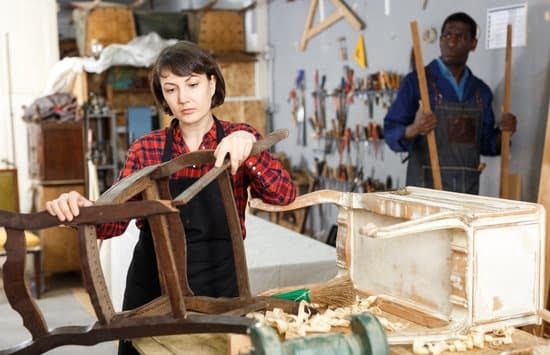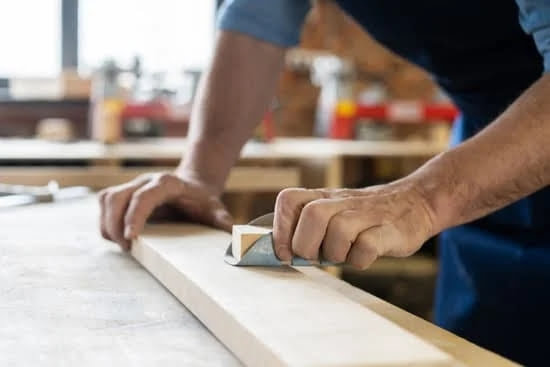Clarify the types of Professional Grade Face Protection
Professional grade face protection typically comes in three types: goggles, full-face shields, and respirators.
Goggles: Goggles cover the eyes and parts of the face surrounding them, offering basic protection from high-velocity particles or flying debris. This type of face protection is recommended for lathes and table saws in order to provide improved visibility when using these tools. Goggles come in various styles and material strengths. Their main disadvantage is that they may fog up quickly due to heat produced by equipment.
Full-face Shields: Full-face shields offer maximum coverage over the entire face as well as above and below glasses. They are also designed with superior foam padding to protect against dust and debris while still providing comfort during prolonged periods of use. This type of face protection can also be worn along with a respirator if additional air filtration is needed. The main disadvantage is that it reduces peripheral vision slightly due to its full coverage design.
Respirators: Respirators filter airborne particles and provide essential protection against dust, smoke, mists, fumes, lead vapor, asbestos fibers and other hazardous particulates that can cause serious illness or death when inhaled through an unprotected nose or mouth. They come in a variety of designs depending on the work environment requirements such as gas masks with cartridges or disposable half-face masks with replaceable filters. The main disadvantage is that they often require regular replacement of filters which can be costly over time while hindering breathing at times since they fit tightly around the wearer’s nose and mouth area
Describe Unique Hazards
Unique hazards can exist in woodworking environments due to the presence of sharp, splintered edges and objects spinning at high rates of speed. Flying debris such as sawdust, wood chips, and shavings can cause eye irritation or damage. Additionally, contact with woodworking tools and machinery can result in cuts and lacerations on the skin. Long exposure to power tools like routers and drills may damage hearing over time due to excessive noise levels. Inhalation of sawdust or other airborne particles can cause respiratory problems, while contact with toxic chemicals used to treat certain woods may be hazardous if not handled correctly. Lastly, potential electrocution hazards are present when working with electricity-powered cutting tools like jigsaws or circular saws.
Highlight Specialty Gear
When it comes to protecting your face while woodworking, there are a range of specialty pieces of equipment available. The most important piece of woodworking face protection are safety goggles, which create a barrier between your eyes and any debris or flying objects. Safety glasses that wrap around the head can provide even more protection while also helping to keep dust out of the eyes. Additionally, face shields provide full-face protection and help block sawdust, debris, and other objects from hitting the face. These usually come with adjustable straps for comfort and fit different shapes and sizes. Face shields can be worn on their own or in combination with safety goggles for additional protection. Whatever you choose, make sure it meets safety standards to ensure your better protection during welding activities.
Stress Comfort Factors
When it comes to woodworking face protection, comfort is key. One of the most important factors to consider when choosing a face shield or other form of face protection is comfort. It should be lightweight and provide an adequate range of vision. Additionally, adjustable straps should help ensure the right fit and avoid any uncomfortable pressure points around the head or eyes. The product should also have ample ventilation to avoid fogging due to body heat and moisture buildup. Soft foam padding is essential for added comfort while wearing a face shield ” whether full coverage or partial ” as well as goggles and dust masks. Your chosen face protection should be designed with the proper level of coverage for your application and personal preference; choose from over-the-head or below-the-neck designs for optimal safety. And making sure you can easily talk, drink, eat and do other tasks without having to remove your face protection will ensure maximum comfort throughout the day.
Illustrate Proper Use
Instructions for Proper Use of Face Protection in Woodworking
To help prevent serious injury to your face and eyes when woodworking, it is important to always wear the proper face protection.
1. Choose the proper eye protection:
-Choose safety glasses or goggles that meet ANSI Z87.1 standards.
-Safety glasses are designed with a plastic side shield that offers additional eye protection from flying debris or sawdust.
-Goggles provide extra wrap-around coverage and a tight seal around the eyes, protecting them from all sides.
2. Put on your facial mask:
-Choose a face mask made of cotton, canvas or leather to protect your mouth, nose a cheeks from flying sawdust and particles during power tool use.
-Make sure the mask fits snugly so there is no gap between the mask and your skin that would allow particles to get through.
3. Wear a hat:
-A wide brimmed hat will offer more protection from flying sawdust and adds one more layer of defense against any kind of debris blowing towards you while using power tools like grinders and routers.
4. Always Supervise Minors:
-Keep children away from woodworking areas at all times; never allow a minor to use power tools without proper adult supervision and face protection equipment.
Include More Reviews
Woodworking can be a hazardous task since you are manipulating sharp tools and working with physical materials that can produce dangerous particles. It is essential to always wear the proper safety equipment in order to protect oneself from serious injuries. Face protection is one of the most important pieces of safety gear to have when woodworking, as it can protect you from dust, debris, and other material that gets into your eyes or face.
Some common face protection products for woodworkers include safety glasses, goggles, and full-face shields. Safety glasses are the least protective option when woodworking since they shield your eyes from dust or debris but leave the rest of your face exposed. Goggles provide more protection because they seal around your eyes and protect your entire face. On the other hand, full-face shields offer complete coverage and are the most secure way to protect yourself while working with power tools or saws.
When considering which product to buy for your own safety needs, customer reviews can provide a great insight into how well certain products might work for you. Reviews can tell whether people found the product comfortable, if they had any issues using it during their projects, and general impressions of how well it protected them against flying debris during sawing or sanding operations. Reviews can be critical in helping decide which type of face protection products best suit an individual’s needs.
Suggest Alternatives
Alternatives to woodworking face protection include safety glasses, goggles, or a full face shield. Safety glasses are lightweight and provide adequate protection from debris, but offers only limited splash protection. Goggles provide more comprehensive coverage of the area around the eyes and allow for some ventilation; however, they can be uncomfortable if worn for extended periods of time. Lastly, a full face shield provides the most complete coverage for all frontal exposures and typically has superior splash-protection over individual eye pieces. They may be heavy and cumbersome to wear for extended amounts of time but offer complete visibility when shielded on the front of the face.

Hi everyone! I’m a woodworker and blogger, and this is my woodworking blog. In my blog, I share tips and tricks for woodworkers of all skill levels, as well as project ideas that you can try yourself.





